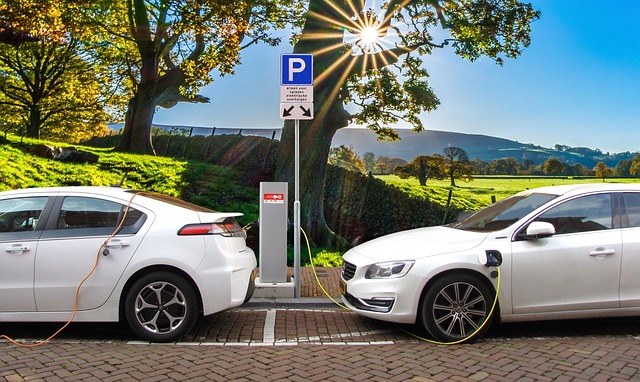Register Car California: VIN Verification & Online Process
“Looking to register your car in California? Navigating the process can seem daunting, but with the right preparation, it’s a breeze. First, understand California’s unique car registration requirement…….

“Looking to register your car in California? Navigating the process can seem daunting, but with the right preparation, it’s a breeze. First, understand California’s unique car registration requirements for vehicle identification number (VIN) verification. Gather essential documents like ownership proof and vehicle records. Once ready, perform a VIN check online or at a DMV office. After passing inspection, complete the registration form, pay fees, and receive your personalized license plate. Ensure a smooth transition with these straightforward steps.”
- Understand California Car Registration Requirements
- Gather Necessary Documents for VIN Verification
- Perform Vehicle Identification Number (VIN) Check
- Complete Online or In-Person Registration Process
- Pay Registration Fees and Receive Your Plate
Understand California Car Registration Requirements

Before registering your car in California, it’s crucial to understand the state’s specific requirements. One key aspect is ensuring accurate and up-to-date information on your vehicle, starting with a valid Vehicle Identification Number (VIN) verification. This process involves confirming the VIN matches the make, model, and year of your car, which is essential for both safety and legal compliance.
In California, you’ll typically need to complete a mobile vin inspection or provide a recent vin verification report as part of the registration process. This can usually be done through an online platform or by visiting a designated service center. Remember, accurate VIN documentation not only helps in smooth registration but also plays a vital role in tracking vehicle history and ensuring safety standards are met.
Gather Necessary Documents for VIN Verification

Before registering your car in California, you’ll need to gather several essential documents for VIN (Vehicle Identification Number) verification. This process is crucial to ensure the vehicle’s history and authenticity. Start by collecting your vehicle’s registration certificate from the previous state, if applicable. This document provides valuable information about the car’s past ownership and any recorded issues. Additionally, obtain the title, which proves ownership and allows you to legally transfer it during registration.
For a seamless vin inspection, consider using a mobile vin verifier or app that can quickly access and verify your vehicle’s details. These tools are convenient as they often provide instant results, ensuring all the necessary data is accurate and up-to-date. Having these documents ready will significantly expedite the registration process when you visit the California Department of Motor Vehicles (DMV).
Perform Vehicle Identification Number (VIN) Check

Before registering your car in California, it’s crucial to perform a Vehicle Identification Number (VIN) check. This step ensures that the vehicle matches its listed details and helps prevent fraud. You can verify the VIN by using official online databases or seeking services from a mobile vin inspector or verifier. These professionals can conduct a thorough inspection, cross-referencing the VIN with state records and ensuring everything is in order.
A valid and accurate VIN verification is essential for a smooth registration process. If you opt for a mobile vin inspection, ensure the service provider is reputable and authorized to offer such services in your area. This simple step can save you time and potential headaches later, making the car registration experience in California more efficient.
Complete Online or In-Person Registration Process

In California, registering your car involves either a completely online process or an in-person visit to a Department of Motor Vehicles (DMV) office. Both methods require preparing essential documents and undergoing crucial steps like VIN verification. For the online route, you’ll start by submitting your application, ensuring all details are accurate, and paying the registration fees through the DMV’s website. After approval, you can print your registration documents or have them sent to your email. Alternatively, visiting a DMV office entails scheduling an appointment (though walk-ins may be accepted), bringing required paperwork including proof of insurance and identification, and undergoing a VIN inspection to confirm vehicle ownership. The friendly staff will guide you through the process, ensuring your car is officially registered in no time.
Pay Registration Fees and Receive Your Plate

After completing your vehicle’s registration application, it’s time to pay the necessary fees. The California Department of Motor Vehicles (DMV) charges a standard fee for car registration, which may vary depending on various factors like the type of vehicle and its emission status. You can typically pay online or visit a DMV office to settle the charges. Once the payment is processed, you’ll receive your license plate(s). These plates are assigned based on availability and might take some time to arrive if ordered through the mail.
A crucial step in the process involves ensuring accurate VIN (Vehicle Identification Number) verification. This can be done conveniently with a mobile VIN inspection service, allowing you to check your vehicle’s history remotely. It’s advisable to cross-check the information provided by the seller or manufacturer during this stage. With a valid and up-to-date registration, along with proper documentation, including a clean VIN inspection report, you’ll be ready to hit the road legally in California.
Registering a car in California involves understanding key requirements, gathering essential documents for VIN verification, performing a Vehicle Identification Number (VIN) check, completing either an online or in-person registration process, and paying corresponding fees. By adhering to these steps and ensuring accurate VIN verification, you’ll successfully navigate the process, ensuring your vehicle is legally registered and ready to hit the California roads.







